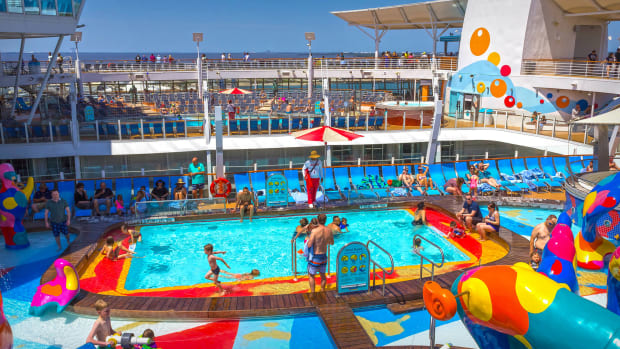The oceans have been stormy for the major cruise lines that sail out of American ports. Royal Caribbean International (RCL), Carnival Cruise Lines (CCL), and Norwegian Cruise Line (NCLH) have had to deal with an uncertain world since their covid shutdown in March 2020.
All three cruise lines have returned to near-normal operations despite the ongoing pandemic, but that does not mean their covid woes have gone away. The pandemic still looms as does the threat of regulation by the Centers for Disease Control.
During the cruise shutdown, the CDC took an adversarial approach to the cruise lines. It issued a "no-sail order" that literally shut down the cruise business from the U.S. and it seemed unwilling to even consider lifting that order despite the huge efforts of Royal Caribbean, Carnival, and Norwegian to show that they could operate safely
Thankfully for cruise fans, the CDC eventually issued rules under which sailings could resume (the conditional-sail order) and, now, all restrictions have been removed. Currently, the CDC and the three major cruise lines have been operating in partnership under a voluntary program. That has allowed the industry to pursue a full, safe return-to-normal.
The CDC may be working more hand-in-hand with the industry, but it still has enormous power over how cruise lines sailing from North America operate. Its latest guidance -- while not a red flag -- is at least something Royal Caribbean, Carnival, and Norwegian passengers need to be aware of.

Shutterstock
How Cruise Lines Are Operating Now
It's important to note that the CDC does not currently have a warning in place when it comes to taking a cruise. That means that aside from guidance related to covid prevention and instructions for at-risk passengers, it is not warning Americans away from cruising (which it did for quite a while even after the return).
All three cruise lines have been requiring their crews and all passengers to be fully vaccinated. Any passenger 12-and-over must provide proof of vaccination as well as a negative covid test taken no more than two days before their sailing.
There are also procedures in place to handle outbreaks onboard and testing procedures for customers taking back-to-back sailings. Masks are now voluntary onboard and pretty much all of the pandemic-related rules have been dropped once you board.
The cruise lines and the CDC do not control what happens or the pandemic-related rules in the cruise lines' various ports of call. Because of that (and for Americans traveling to these destinations by airplane) the CDC does issue warnings about travel destinations when appropriate. It has done that for two popular cruise ship ports.
The CDC Issues a New Warning
Many of the countries the cruise lines visit still have covid protocols in place. Some require masks when indoors or even masks in any public place. The CDC monitors the situation in each country and issues guidance for Americans who may visit.
The CDC "has elevated its COVID-19 warning level for three popular Caribbean island destinations, placing them at Level 3. Anguilla, Jamaica, and Turks & Caicos have all been moved to the 'high' risk category," Cruisehive reported.
"This new advisory recommends that travelers who are not up-to-date on their vaccines – a full initial vaccination series plus a booster shot when eligible – avoid travel to destinations classified as Level 3. Furthermore, travelers who are considered at higher personal vulnerability due to a weakened immune system or other health risks should avoid travel to Level 3 regions," the cruise news website reported.
These warnings -- and continued elevated levels of covid at many ports -- could lead to some passengers putting off their cruise. Some people, perhaps many people, have been wary of cruising to places where covid risk remains high. Others have been concerned about protocols and having to wear a mask while in port.
This latest CDC decision could cause more people to put off their cruises further depressing prices.







